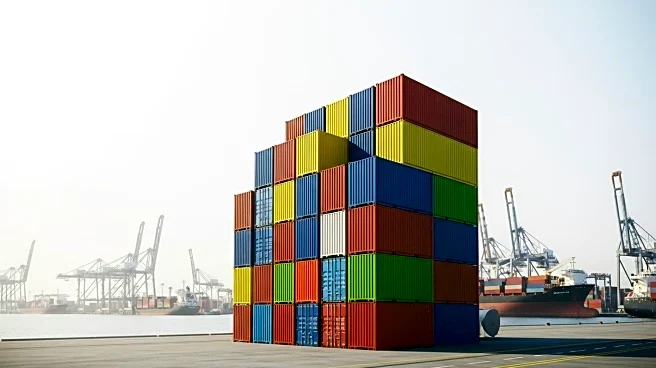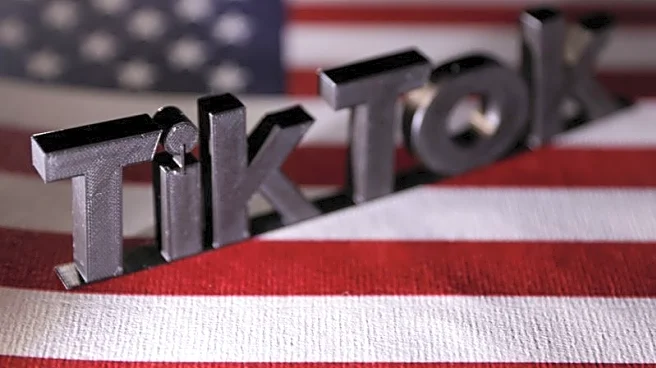What's Happening?
International container rates have significantly decreased in recent weeks, influenced by cooling economic signals in Western countries and the Golden Week holiday in China. The Shanghai-U.S. West Coast route experienced a 31% drop in rates, reaching $1,600 per FEU. Similarly, the Shanghai to East Coast route fell to $2,500 per FEU, marking a 23% decrease. Rates from Shanghai to Europe also declined by 9% to $1,000 per TEU. This trend is attributed to reduced demand and the anticipation of blanked sailings, as carriers continue to adjust capacity. Vespucci Maritime analyst Lars Jensen noted that approximately 14% of capacity has been removed from the Pacific and 17% from Asia and Europe.
Why It's Important?
The decline in container rates reflects broader economic challenges, including tariffs on China and shifting consumer sentiment in the U.S. With tariffs currently exceeding 30% and set to increase further, trade tensions remain a critical factor. The University of Michigan's survey indicates that many Americans expect rising unemployment, with significant concern among lower and middle-income consumers. This sentiment could impact consumer spending and economic stability, influencing trade policies and negotiations between Beijing and Washington.
What's Next?
As demand continues to drop, carriers are likely to further reduce capacity to stabilize rates. The upcoming automatic tariff increase on November 10 could exacerbate trade tensions unless a new agreement is reached. Stakeholders, including businesses and policymakers, will need to monitor these developments closely to mitigate potential economic disruptions.
Beyond the Headlines
The ongoing trade policy issues highlight the complex interplay between international relations and domestic economic health. The persistent focus on tariffs by consumers underscores the need for transparent and effective policy communication. Long-term shifts in trade dynamics may necessitate strategic adjustments by businesses and governments to adapt to evolving market conditions.












